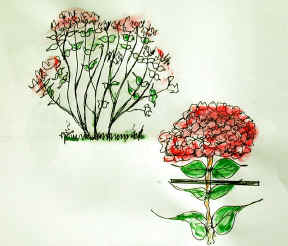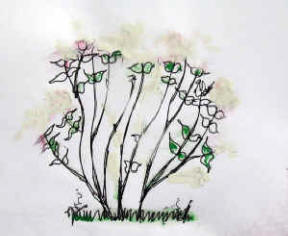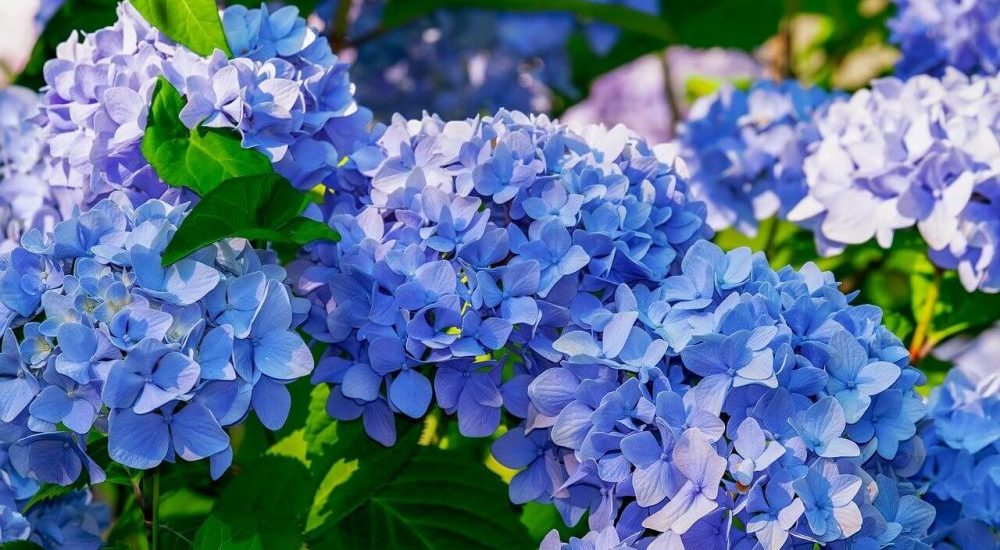Hydrangea macrophylla types are the main garden Hydrangeas grown in the UK. The group is split into two distinct flower types – The Mopheads and the Lacecaps.
For the purpose of this page, they can be treated in the same manner as far as pruning is concerned. Both Mophead and Lacecap Hydrangeas benefit from pruning to keep shape and size under control, but neither actually ‘Need’ pruning.
If they are to be pruned, then the information and illustrations below will guide you through the very simple pruning operation. Do it in the right manner, and at the right time of year, and you should have a good succession of blooms and new shoots. Un-pruned Hydrangeas in this group tend to lose flower size as the years go by.
The important thing to know is that as they are mid – to late – summer flowering, they produce flower on shoots that were made in the previous year. From these older shoots, the current years grow will start which are the actual flower bearing stems.
As an example, if you were to cut this type of Hydrangea – macrophylla – down to ground level in the late spring or early summer, it would produce masses of new shoots quite soon, but they will be the stems from which next year’s flowers will grow. These new shoots, as healthy as they look, will not flower this year.
It is normal to leave the faded flower heads on the plant throughout the winter. They give added interest in the autumn, and protect the new buds below from severe frost damage.
(Hydrangea serrata Bluebird – Above. A choice and popular lace cap variety of Hydrangea that falls within the method of pruning outlined below.)
When and How to Prune Hydrangea Bushes
 In early spring, simply prune off last season’s flower heads to about the first pair of healthy buds below the old flower head. You will be cutting back into the stem that was produced by the plant last year – now it is this year’s flower bearing shoot. At the time of this pruning, there will probably be some shoots emerging from the dormant buds. That is normal – you can still cut to just above a good new pair of shoots if this has started. Don’t be tempted to cut further down the stem. 4-6in from the old flower head is about right.
In early spring, simply prune off last season’s flower heads to about the first pair of healthy buds below the old flower head. You will be cutting back into the stem that was produced by the plant last year – now it is this year’s flower bearing shoot. At the time of this pruning, there will probably be some shoots emerging from the dormant buds. That is normal – you can still cut to just above a good new pair of shoots if this has started. Don’t be tempted to cut further down the stem. 4-6in from the old flower head is about right.
With older bushes, it would be a good idea to prune one or two of the main stems down to near ground level to encourage new growth from the base of the plant. This ensures continuous supply of healthy stems and usually results in larger Hydrangea flowers.

When doing this rejuvenation pruning, take out shoots evenly around the mature bush to ensure a uniform habit of growth. It is a good idea when doing this, to take out the weakest most spindly stems. They can then start life again with new vigour – normally improving into sturdy youths!
Detail diagram of how to cut back the old flower truss The pruned Hydrangea picture below, shows the hydrangea bush in the top sketch after pruning to open out and remove weak growth.
For most deciduous shrubs that flower in mid to late summer on growth made in the previous year, which included the hydrangeas above, the pruning method is the same.

